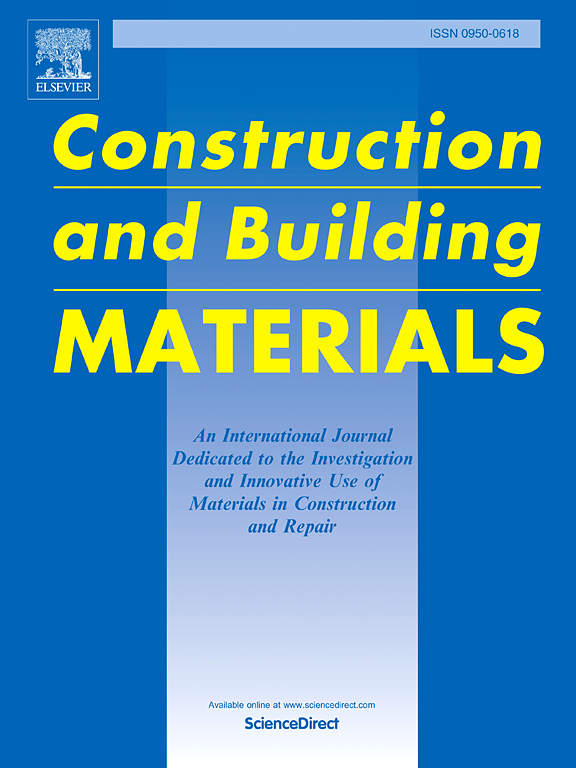Study on the solidification/stabilization of Cu(II) and Cd(II)-contaminated soil by fly ash-red mud based geopolymer
IF 7.4
1区 工程技术
Q1 CONSTRUCTION & BUILDING TECHNOLOGY
引用次数: 0
Abstract
The preparation of geopolymer for solidification/stabilization of heavy metal contaminated soils using industrial solid waste was a sustainable method. In this study, a binary geopolymer curing agent was synthesized from red mud and fly ash for the treatment of copper- and cadmium- contaminated soils. The changes in the properties of the cured soil were investigated by analyzing compressive strength, permeability coefficient, pH value, toxicity leaching, and the chemical forms of heavy metals. These parameters were examined under varying amounts of curing agent and curing time. The solidification mechanism of contaminated soil was revealed by microscopic experiments such as X-ray diffraction (XRD), infrared spectroscopy (FTIR), scanning electron microscope with energy dispersive X-ray spectroscopy (SEM-EDS). The results showed that geopolymer could significantly improved the mechanical properties and environmental safety of contaminated soil. Compressive strengths of Cu and Cd contaminated soils after 28d of curing with 30 % geopolymer were 1.27 and 1.44 MPa, the permeability coefficients were 4.2 and 3.8−6cm/s, and toxic leaching amounts of Cu2+ and Cd2+ were 4.8 and 0.21 mg/L, and pH values were 10.9 and 10.6, respectively. Geopolymer gel structures not only filled the voids between soil particles but also physically encapsulated, chemically bonded, precipitated and ion-exchanged to achieve solidification/stabilization of contaminated soils. This research provided a new technology for the management of heavy metal contaminated soil and promoted the sustainable use of industrial solid waste.
求助全文
约1分钟内获得全文
求助全文
来源期刊

Construction and Building Materials
工程技术-材料科学:综合
CiteScore
13.80
自引率
21.60%
发文量
3632
审稿时长
82 days
期刊介绍:
Construction and Building Materials offers an international platform for sharing innovative and original research and development in the realm of construction and building materials, along with their practical applications in new projects and repair practices. The journal publishes a diverse array of pioneering research and application papers, detailing laboratory investigations and, to a limited extent, numerical analyses or reports on full-scale projects. Multi-part papers are discouraged.
Additionally, Construction and Building Materials features comprehensive case studies and insightful review articles that contribute to new insights in the field. Our focus is on papers related to construction materials, excluding those on structural engineering, geotechnics, and unbound highway layers. Covered materials and technologies encompass cement, concrete reinforcement, bricks and mortars, additives, corrosion technology, ceramics, timber, steel, polymers, glass fibers, recycled materials, bamboo, rammed earth, non-conventional building materials, bituminous materials, and applications in railway materials.
 求助内容:
求助内容: 应助结果提醒方式:
应助结果提醒方式:


